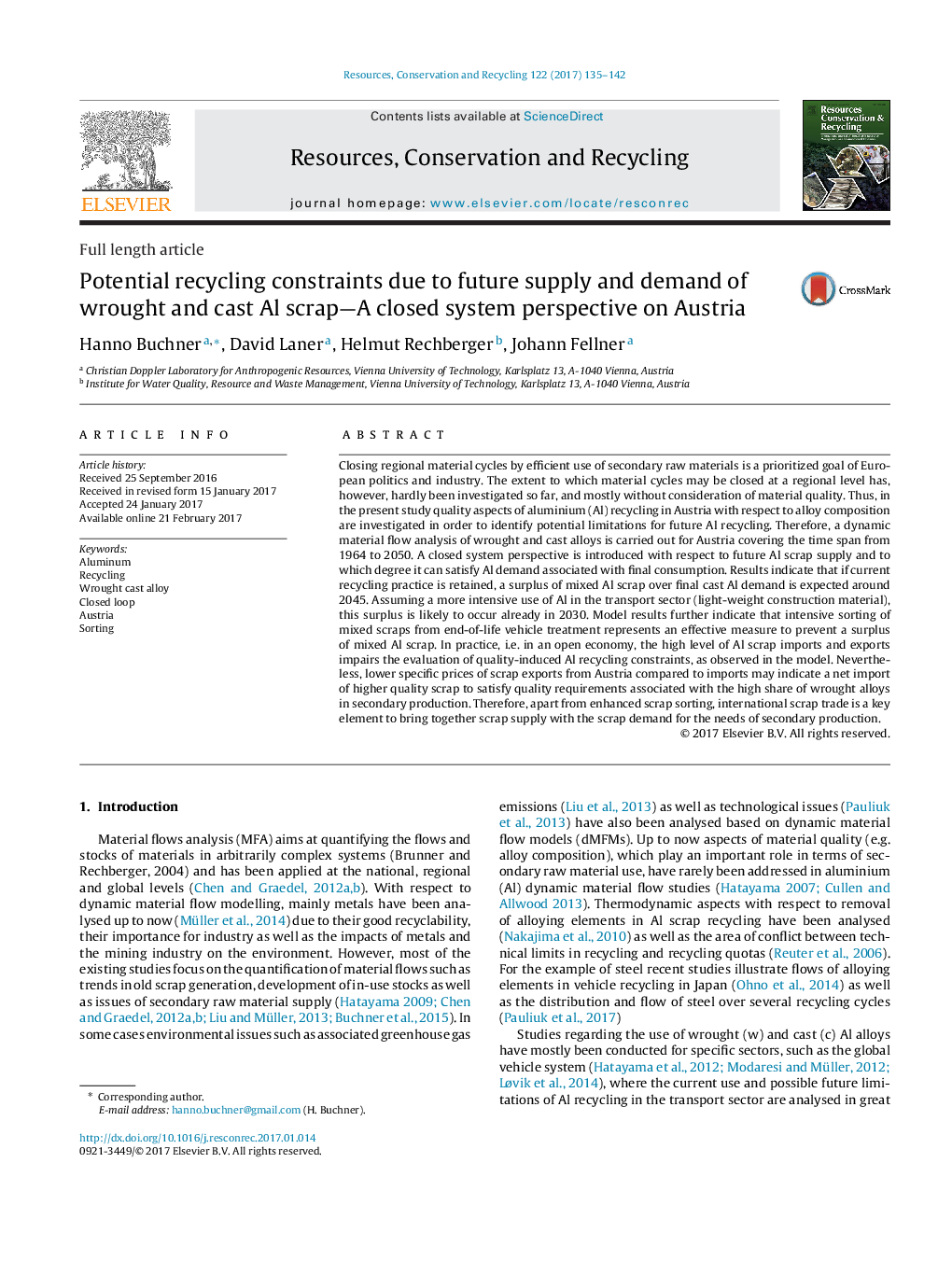| کد مقاله | کد نشریه | سال انتشار | مقاله انگلیسی | نسخه تمام متن |
|---|---|---|---|---|
| 5118784 | 1485670 | 2017 | 8 صفحه PDF | دانلود رایگان |
- Extension of a dynamic material flow model of Austrian aluminium flows to wrought and cast alloys.
- Identification of recycling constraints in a closed system perspective.
- Surplus of mixed scrap expected between 2030 and 2045 depending final aluminium demand development.
- Impact evaluation of enhanced mixed aluminium scrap sorting from end-of-life vehicles.
- Analysis of foreign scrap trade prices in view regional aluminium scrap supply and demand.
Closing regional material cycles by efficient use of secondary raw materials is a prioritized goal of European politics and industry. The extent to which material cycles may be closed at a regional level has, however, hardly been investigated so far, and mostly without consideration of material quality. Thus, in the present study quality aspects of aluminium (Al) recycling in Austria with respect to alloy composition are investigated in order to identify potential limitations for future Al recycling. Therefore, a dynamic material flow analysis of wrought and cast alloys is carried out for Austria covering the time span from 1964 to 2050. A closed system perspective is introduced with respect to future Al scrap supply and to which degree it can satisfy Al demand associated with final consumption. Results indicate that if current recycling practice is retained, a surplus of mixed Al scrap over final cast Al demand is expected around 2045. Assuming a more intensive use of Al in the transport sector (light-weight construction material), this surplus is likely to occur already in 2030. Model results further indicate that intensive sorting of mixed scraps from end-of-life vehicle treatment represents an effective measure to prevent a surplus of mixed Al scrap. In practice, i.e. in an open economy, the high level of Al scrap imports and exports impairs the evaluation of quality-induced Al recycling constraints, as observed in the model. Nevertheless, lower specific prices of scrap exports from Austria compared to imports may indicate a net import of higher quality scrap to satisfy quality requirements associated with the high share of wrought alloys in secondary production. Therefore, apart from enhanced scrap sorting, international scrap trade is a key element to bring together scrap supply with the scrap demand for the needs of secondary production.
81
Journal: Resources, Conservation and Recycling - Volume 122, July 2017, Pages 135-142
